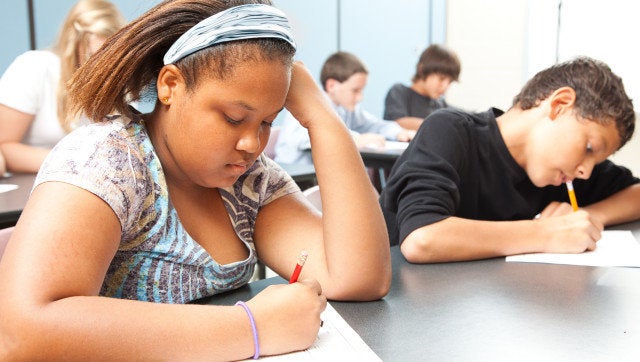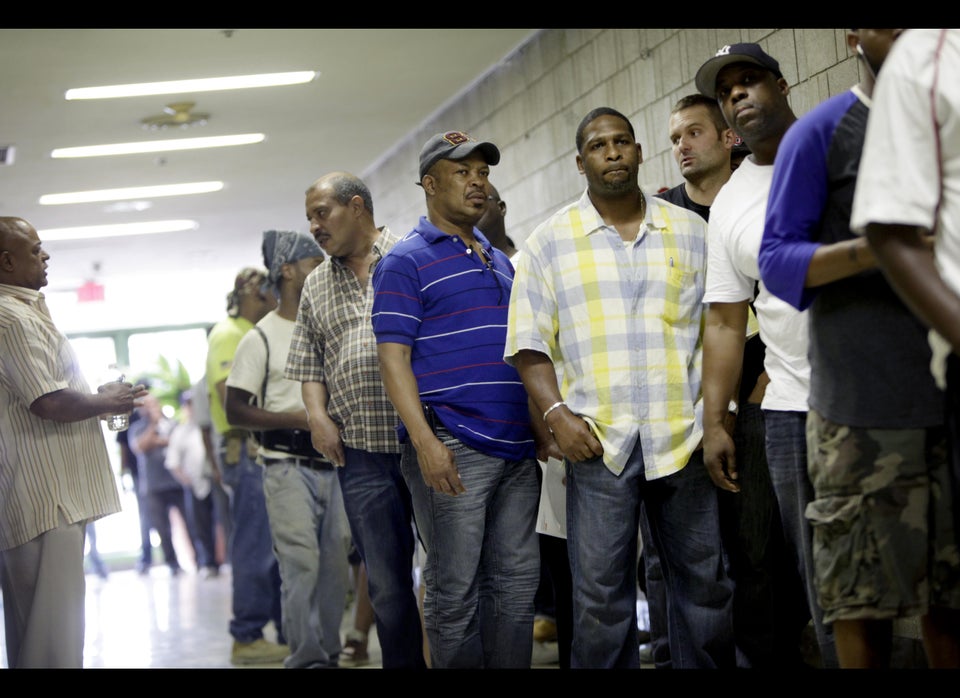
Education Trust President Kati Haycock travels around the nation spreading her non-profit organization’s mission of promoting high academic achievement for all students and closing the gaps in opportunity and achievement for young people, especially those from low-income families as well as African American, American Indian and Latino students.
However, the biggest hurdle against achieving such goals remains stereotypes on race and ethnicity.
“Many educators, and frankly many other members of the public, believe that poor kids and Latino kids and African-American kids just aren’t capable of learning to the same levels of other kids,” Haycock told VOXXI. “That sort of idea that is locked in people’s heads, that kind of no matter what schools do, these kids will never achieve at really high levels. That’s absolutely our biggest challenge.”
Haycock points to data from North Carolina where high achieving non-Hispanic white or Asian students in 6th or 7th grade math will be put into 8th grade algebra roughly 95 percent of the time. For high-performing African-American and Latino students, however, that figure drops to 60 percent. Perhaps just as shocking, Haycock adds that non-Hispanic white kids in the next lowest achievement level are about as likely to be put in algebra as African-American and Hispanic students in the highest achievement category.
“The teachers say, ‘Well, we don’t want to push them, they might fail,’” Haycock said. “And we’re saying, ‘No, the data actually suggests that they’ll succeed.’”
Education Trust is also focusing on bringing high-achieving teachers into all schools and districts where there are low-income and minority students. Studies show Latino students are disproportionately placed in classes taught by less-effective teachers.
“Our job is to call attention and try to focus energy and action on identifying both opportunity gaps and achievement gaps,” Haycock said. “We do a lot with data. We’re both presenting the problem in a stark and honest fashion as we can, but also giving people sort of hope and information by showing them places that are getting the job done and helping them to understand what those places are doing.”
As for those places getting the job done, Haycock said a soon-to-be-released Education Trust report – based on absolute achievement and where the biggest improvement for Latino students is taking place – indicates how states are doing with the achievement gap.
Haycock said Maryland, Georgia, Massachusetts and Florida are doing well with Latino students, while Oregon, California, Connecticut and Utah need the most improvement.
Education Trust, which holds an annual conference examining the achievement gap, spends much of its time at institutions that are unusually successful with Hispanic and African-American kids, as well as with schools and colleges looking to make progress on the issue. The group also pushes government policy that will both press educators to craft legislation to not only help children in schools but also give them the resources they need to do a better job.
Education Trust has an additional initiative involving 24 public university systems. For the past four years, it’s been trying to cut in half the gaps in both college access and college success that separate their Latino students from their non-Hispanic white students. The idea is this can be accomplished by changing the mix of who is not only going to college but succeeding.
“Still, in higher ed, they’re not so sure about that,” Haycock said. “They think if they’re a college who serves students of color, they will inevitably have lower graduation rates. When as you see in [our] report, it’s clear that there are some colleges who serve lots of minority kids, many of them who are under-prepared, that actually manage to get far more of them through than other colleges do. So colleges are just starting to recognize that like the [K-12] schools, what they do after they get the students is really important in determining who succeeds and who doesn’t.”
In looking ahead, Haycock sees a mixed bag of results that temper optimism of mainstream educational reform benefiting Latino students.
“Unlike 15 years ago when people didn’t even know about this thing called the achievement gap, it’s the No. 1 thing for everybody,” Haycock said. “So there’s more awareness and there’s more at least verbal rhetorical commitment to action but on the ground it’s a more dubious situation.
“If you look at the data, we’re definitely making progress with Latino students in the elementary grades. There is no question our elementary level Hispanic kids are performing better in both reading and math. Middle grades are mostly better too but at the high school level, the data is far more mixed. While some states are making progress, the overall numbers nationally do not look good. And it’s quite clear both in secondary schools and in higher education the changes are harder and slower.”
Originally posted on VOXXI as Ed Trust President: Lower expectations, challenge for Latino students
